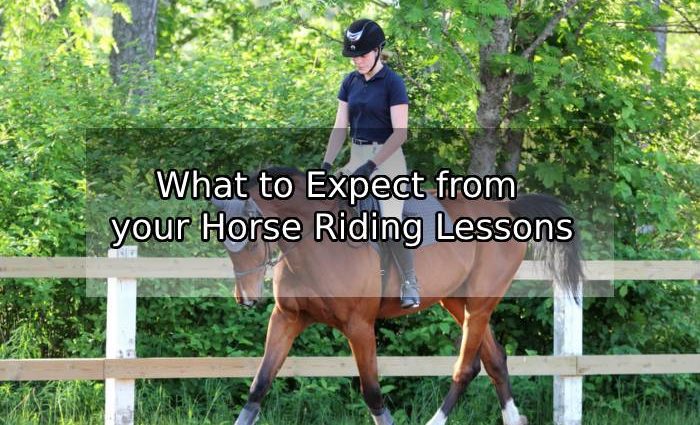Once you’ve chosen a riding center and style of riding, you’ll likely be presented with a few different options for lessons.
Table of Contents
Types of Lessons
Different riding instructors have varied approaches to teaching horseback riding. You may want to try several instructors to determine which method is best for you.
Private Lessons vs. Group Lessons
Private lessons, though expensive, are excellent for beginning riders because instructors provide both you and the horse with constant attention. After a few private lessons, you might consider moving into a group-lesson setting.
Most riding lessons are offered as group lessons. These can be an outstanding learning experience as you observe other riders whose abilities are at roughly the same level as your own. Be wary, though, if you’re placed in a lesson with riders of all different levels. This is not beneficial to you or them, and it can be dangerous, too.
Riding Only vs. Full Experience
Some riding facilities teach riding only and spend little time showing students how to prepare a horse for riding (grooming and tacking) or cooling a horse down after the lesson. If you simply wish to learn to ride, this approach may work for you. But if your plans include someday owning or leasing a horse or riding in settings outside a structured lesson, knowing the pre- and post-ride skills are necessary.
The full riding experience includes preparing the horse for riding, the riding lesson, and post-ride work. Many students enjoy the full experience: not only does it teach addi-tional skills, it also provides an opportunity for the horse and rider to bond.
What to Bring to Your Lesson
Though there’s no need to purchase expensive riding attire for your first lesson, you should definitely dress with safety and comfort in mind.
Shoes or Boots
Your shoes or boots should be sturdy and closed (no exposed toes). They should have at least quarter-inch heels to prevent your feet from slipping through the stirrups. After you become more experienced, you may opt to buy specialized riding shoes or riding boots. For children, riding boots (and other general horse-riding apparel) can often be purchased secondhand from older riders or at tack supply stores, or traded in an equipment exchange.
Headgear
Whether you’re on a horse or simply near one, you should wear a riding helmet that meets the requirements established by ASTM International and has been approved by the Safety Equipment Institute (SEI). Beginning students can often use helmets supplied by the riding center.
Before you buy a helmet, make sure it has a proper fit—snug, with the rim sitting squarely on your forehead to take impact and protect your face if necessary. Ask a salesperson for assistance if you are unsure.
Cowboy Hats
Cowboy hats might look good in the movies, but they provide little protection in real life. When you’re on a horse, wear a helmet.
Clothing
It may be tempting to purchase a fancy outfit or the latest riding pants, but for your first few lessons, wear comfortable pants that stretch a little, a shirt that will move with you, and long socks to protect your lower legs. Female riders may need the additional support of a sports bra. For cool-weather days, you may want gloves—though again, they don’t need to be expensive. Only once you determine that you’d like to take up horseback riding seriously is it necessary to buy special riding pants or chaps/half chaps.
Riding Without Owning a Horse
It’s not necessary to own a horse to become an experienced and knowledgeable rider. Although horse ownership has its advantages, there are benefits to riding different horses: doing so exposes you to different personalities, breeds, sizes, and types of riding. The more experiences you have, the better rider you’ll become. And as you gain experience, your overall expenses may be significantly less than owning and caring for your own horse.
If you wish to have access to a horse but don’t wish to own one, you have several options:
- Lessons: You can limit your riding time to lessons.
- Practice rides: Some riding facilities allow you, once you reach a certain riding level, to work with horses in practice sessions under limited supervision.
- Leasing: You can lease a horse either on a full lease or a partial lease (shared lease). But before signing any lease, read the fine print carefully. Some leases require that you pay extra care expenses, such as visits from veterinarians and farriers (hoof-care specialists). Be cautious of your liability, too.
- Center memberships: Some equine centers, especially in larger cities, have riding memberships that allow you as a member to take a certain number of rides or hours of riding per month. This option can be an excellent way to try different horses. A higher level of riding ability is often required, however, since you may or may not be supervised.
- Riding with other horse owners: Although it may be tempting to ride with a friend or neighbor who has an extra horse, proceed with caution. Private horse owners may not have adequate insurance, or their horses may not be comfortable with a less experi-enced rider on them.


Comments are closed, but trackbacks and pingbacks are open.